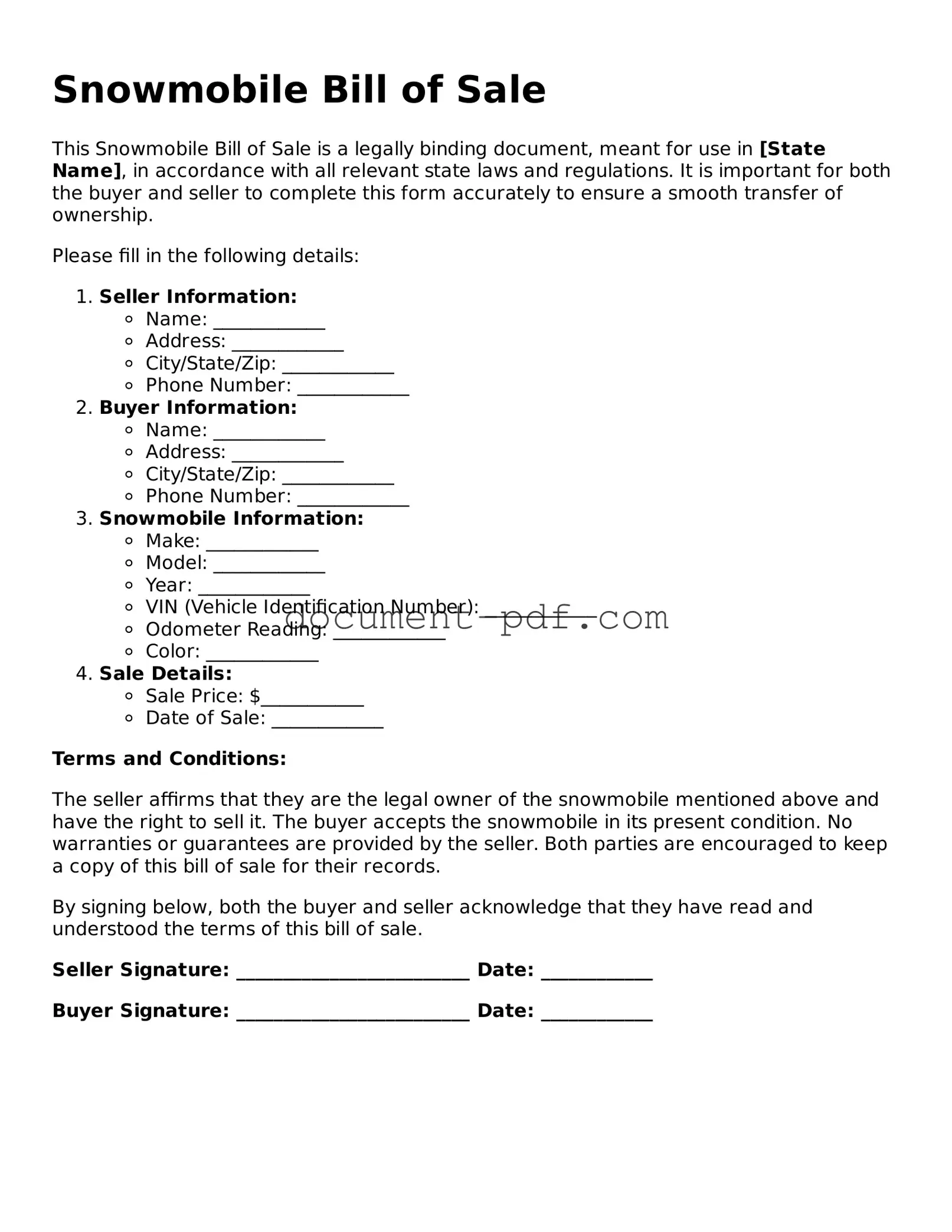Snowmobile Bill of Sale
This Snowmobile Bill of Sale is a legally binding document, meant for use in [State Name], in accordance with all relevant state laws and regulations. It is important for both the buyer and seller to complete this form accurately to ensure a smooth transfer of ownership.
Please fill in the following details:
- Seller Information:
- Name: ____________
- Address: ____________
- City/State/Zip: ____________
- Phone Number: ____________
- Buyer Information:
- Name: ____________
- Address: ____________
- City/State/Zip: ____________
- Phone Number: ____________
- Snowmobile Information:
- Make: ____________
- Model: ____________
- Year: ____________
- VIN (Vehicle Identification Number): ____________
- Odometer Reading: ____________
- Color: ____________
- Sale Details:
- Sale Price: $___________
- Date of Sale: ____________
Terms and Conditions:
The seller affirms that they are the legal owner of the snowmobile mentioned above and have the right to sell it. The buyer accepts the snowmobile in its present condition. No warranties or guarantees are provided by the seller. Both parties are encouraged to keep a copy of this bill of sale for their records.
By signing below, both the buyer and seller acknowledge that they have read and understood the terms of this bill of sale.
Seller Signature: _________________________ Date: ____________
Buyer Signature: _________________________ Date: ____________
